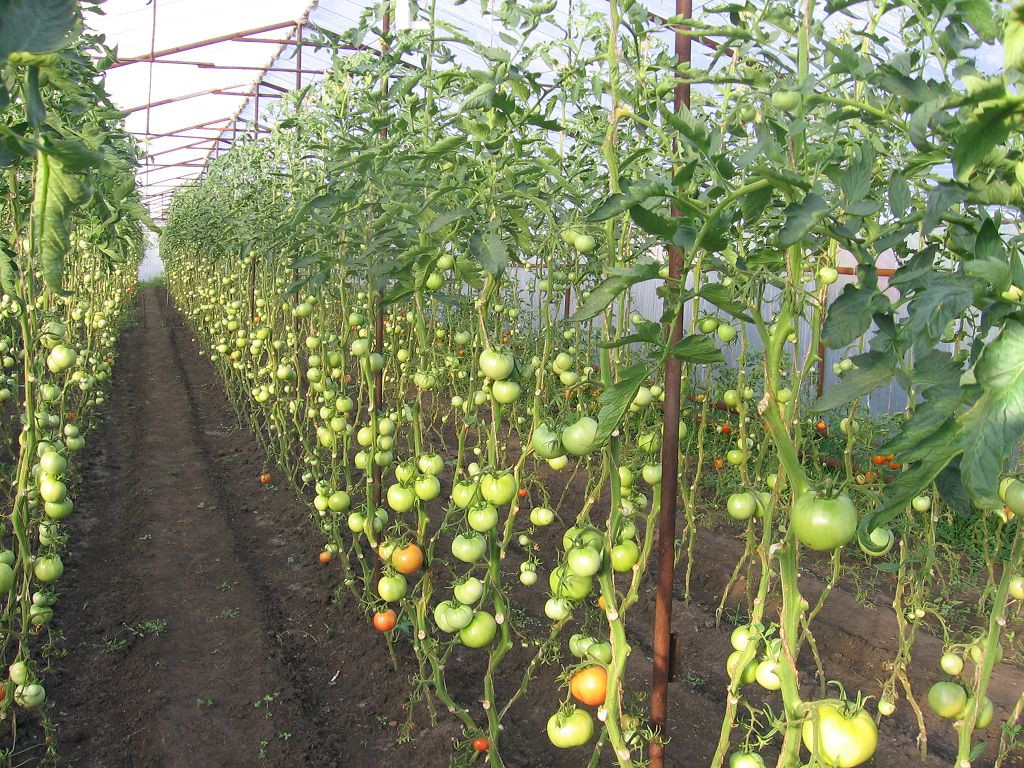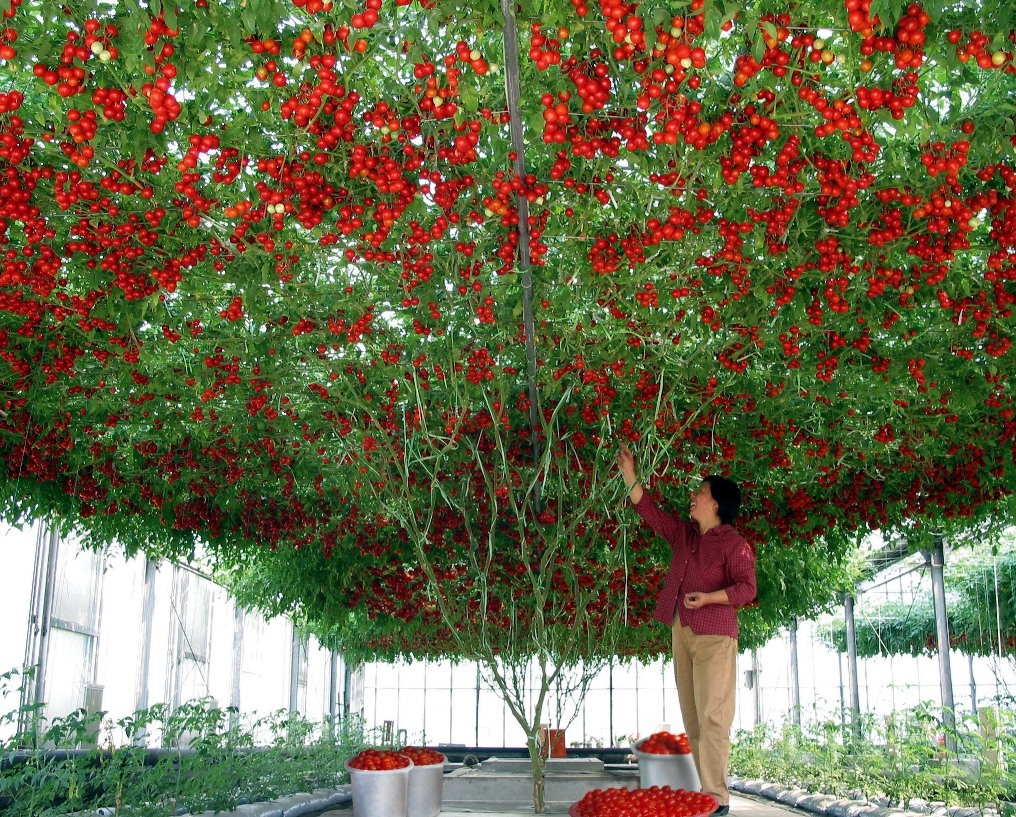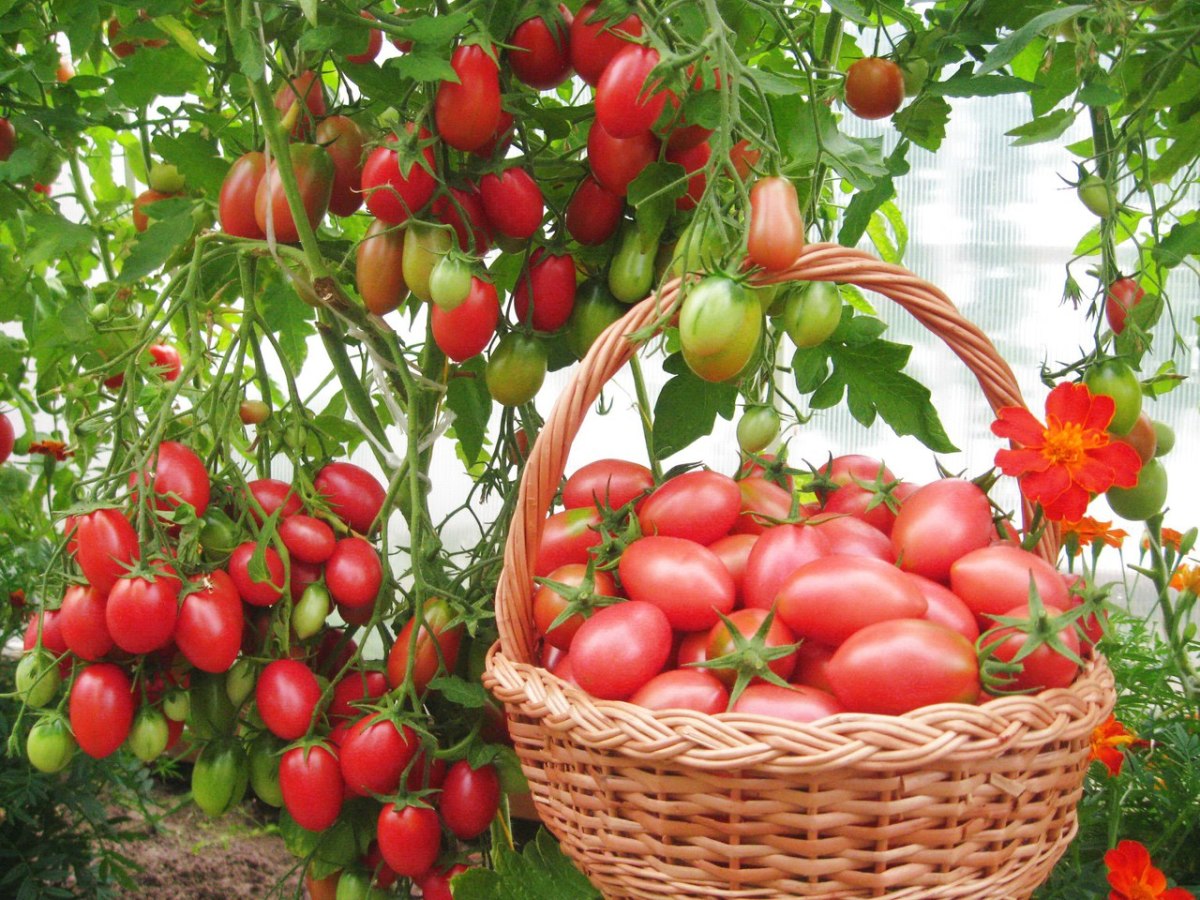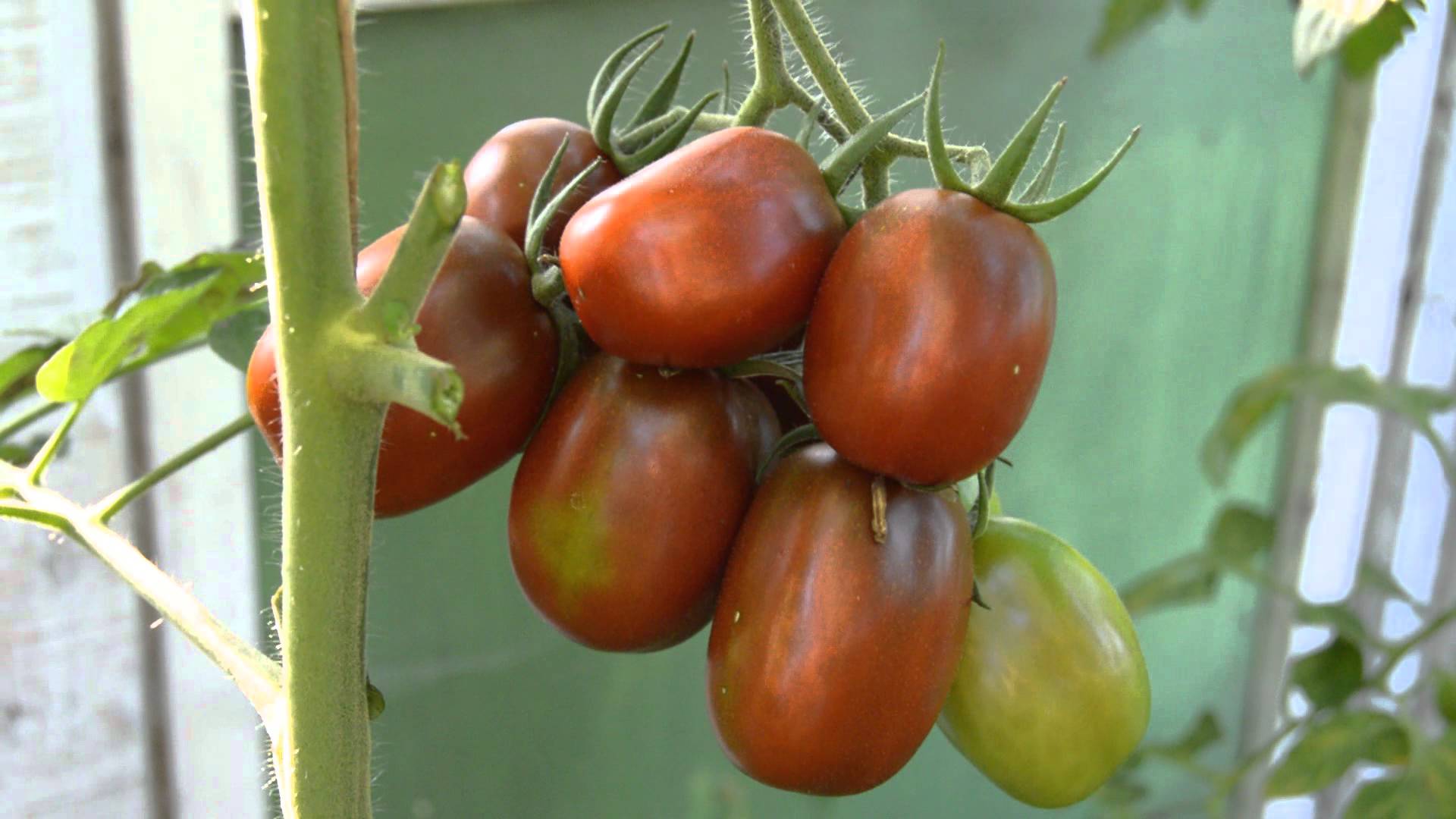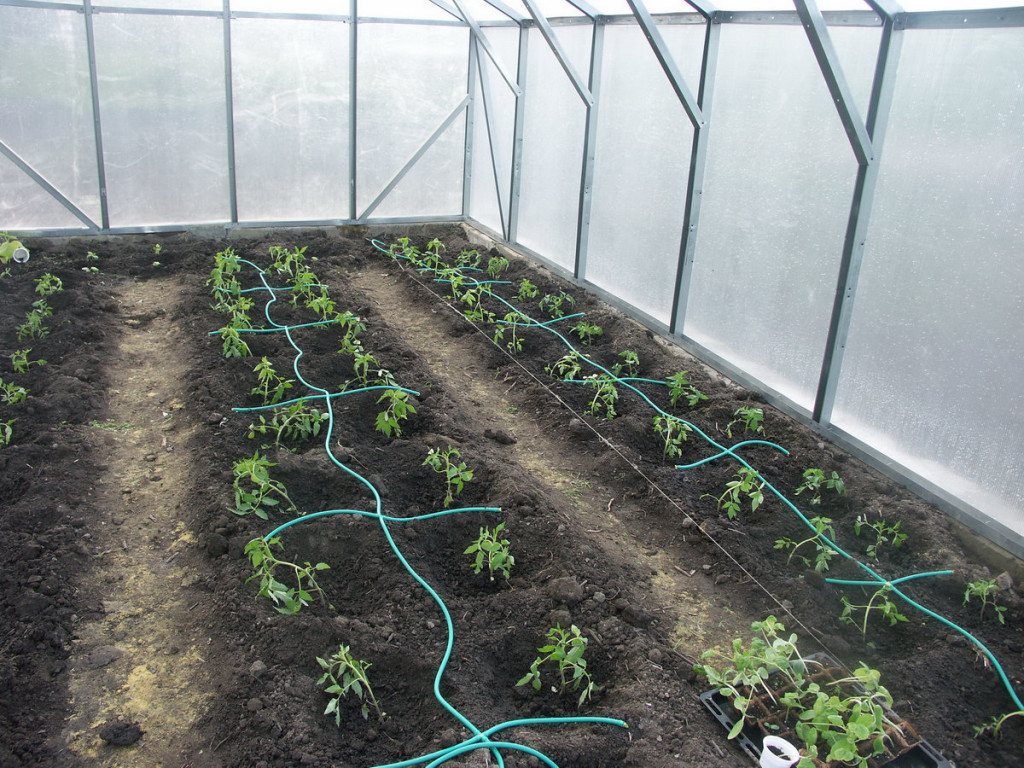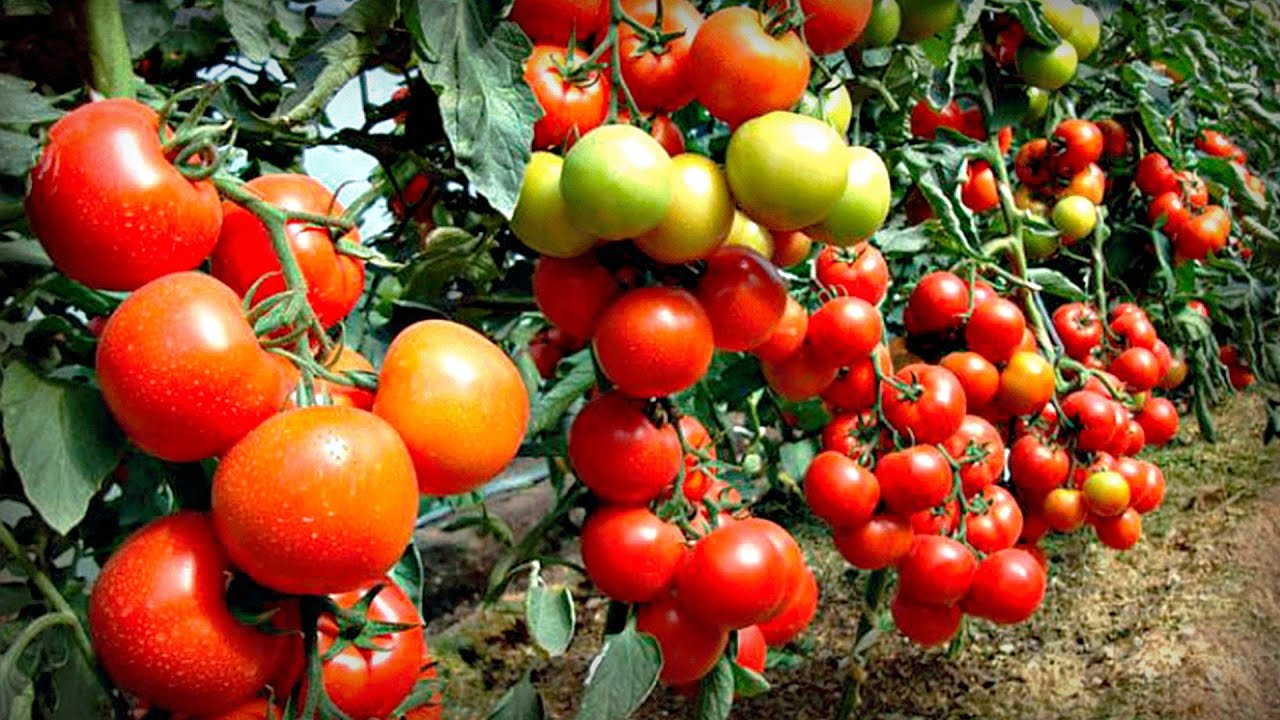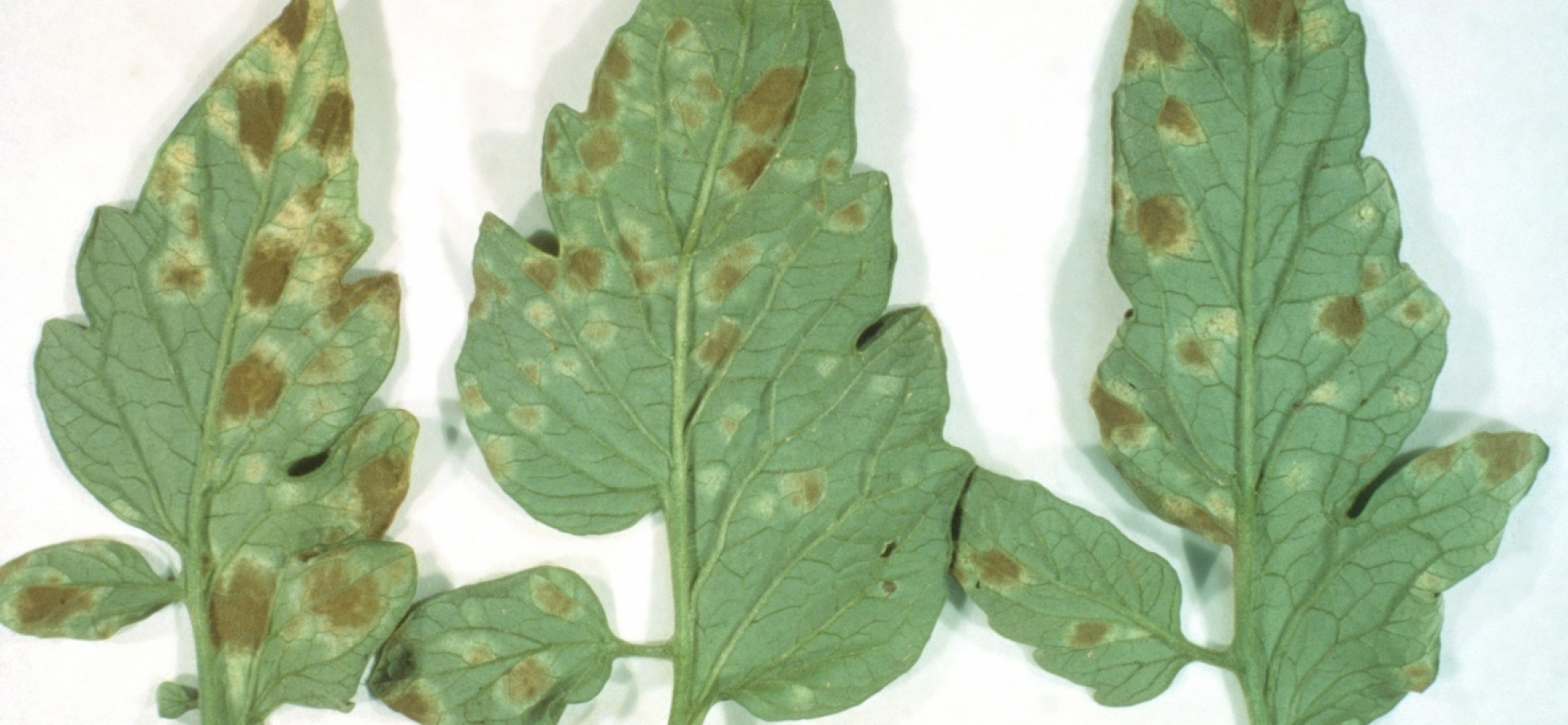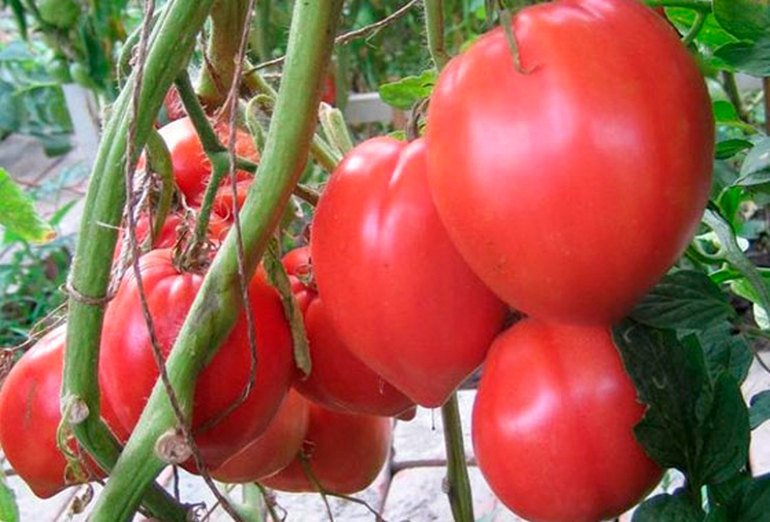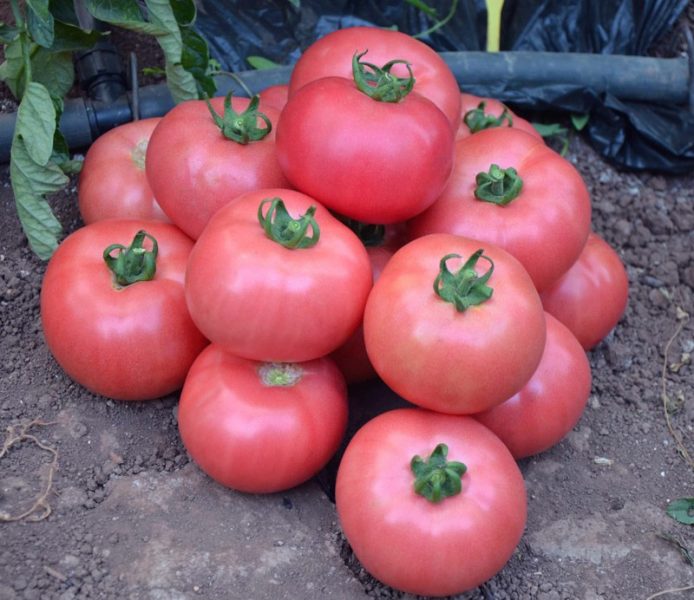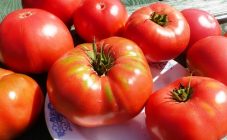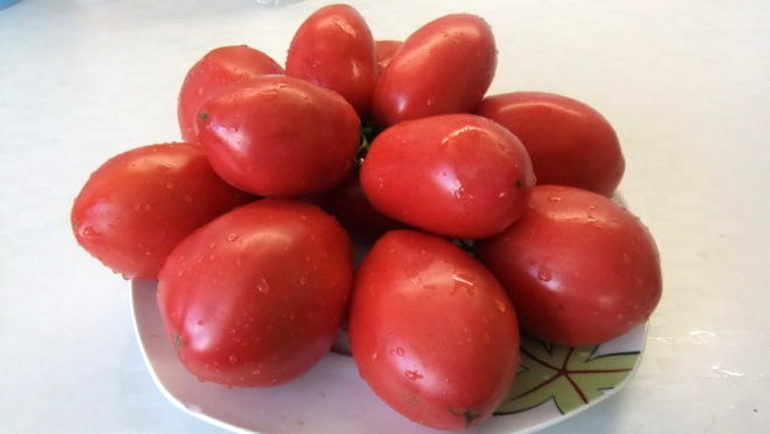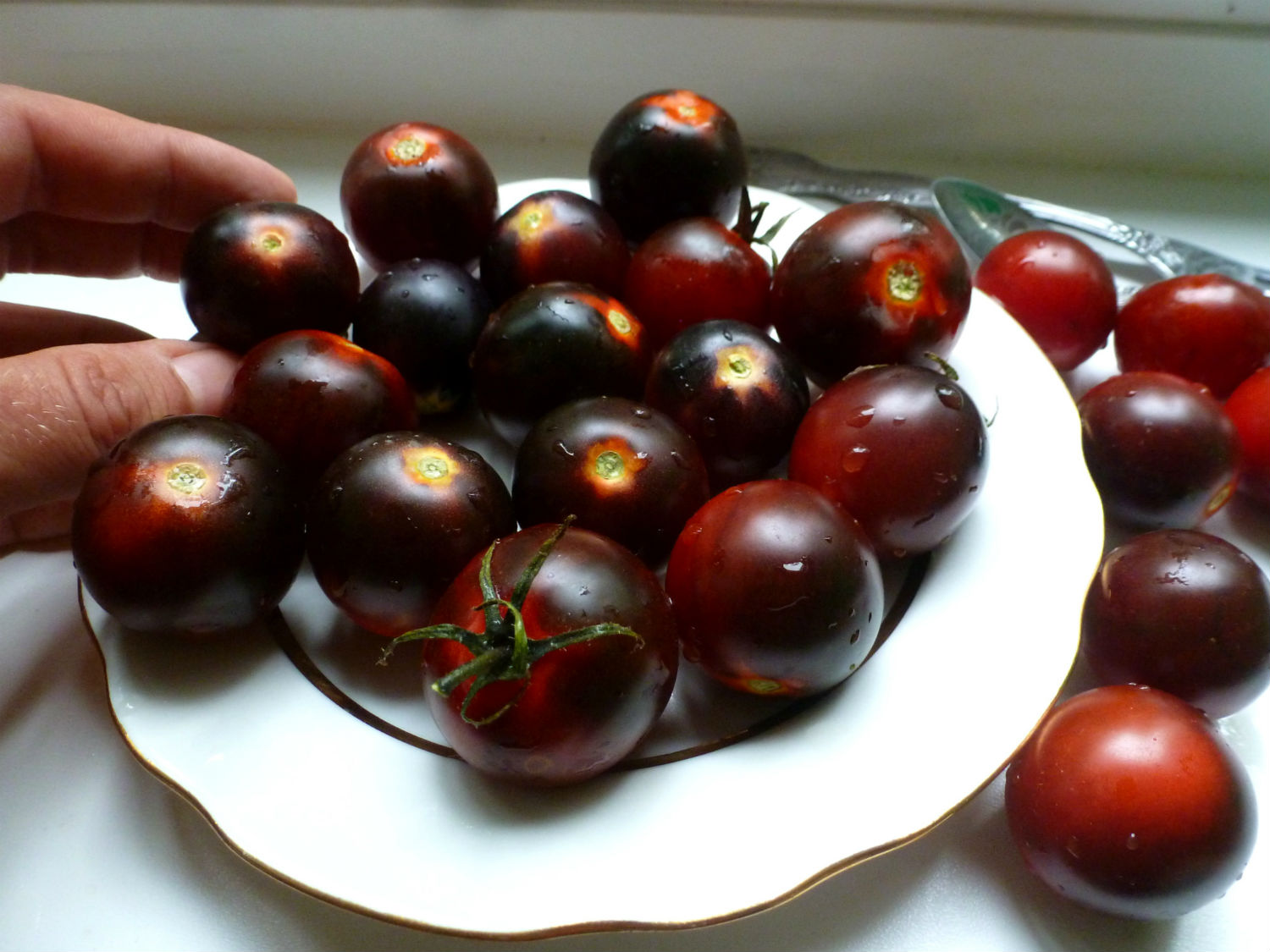Content:
Tomatoes at their summer cottage have become permanent residents, having long left the southern regions. Delicious healthy vegetables are successfully growing in Siberia and the Urals, not to mention the Central lane, and not only in protected beds. The variety of varieties, adapted to different climatic conditions, satisfies no less varied tastes. Tall tomatoes are of particular interest; the features of their cultivation will be discussed below.
Brief characteristics of tomatoes
Tomatoes (tomatoes) are a vivid representative of the Solanaceae family, in the Russian climate they are grown as an annual herb, although in their homeland, in South America, it is a perennial, more like a tree.
Fruits are rich in vitamins - C, B1, B2, B6, B9, K, PP, carotene, microelements, in particular, copper, iron, potassium, magnesium, manganese, zinc. Also, in addition to the main nutrients (proteins, fats, carbohydrates), tomatoes contain pectins, organic acids, sugars, fiber, ash elements.
The root system is powerful, branched, penetrating to a depth of 1.5 meters, in some cases even more, i.e. in severe drought, tomatoes are able to get to the water themselves.
Features of growing tall tomatoes
Why tall tomatoes are good, which are increasingly found in greenhouses and in open beds:
- Indeterminacy. Equally suitable for greenhouses and open ground. The bushes form one to three stems, which greatly simplifies care, because there is no need to mess with side shoots.
- Growth type - vegetative, i.e. they gain green and fruit mass throughout the season, up to frost, without compromising quality.
- Places take up the same as undersized, which greatly facilitates the processing of bushes with a large harvest.
- Yield subject to the rules of agricultural technology, it reaches 10-12 kg per bush.
- Less affected by late blightsince the lower leaves are far enough from the ground.
A careful selection of varieties and hybrids that are resistant to diseases, with different periods of fruiting and other characteristics, allows you to get a high yield for a long time.
It is best to grow varieties in greenhouses:
- Brazilian giant;
- Alyonushka;
- Chio-Chio-Chan;
- Krasnobay F1;
- Akatui F1;
- Queen Margot F1;
- Batyan;
- Amateur pink;
- Mikado is pink.
Tall tomatoes of the best yielding varieties for open ground are successfully grown in all regions:
- De Barao is a high-yielding variety with pink, red, yellow, orange and black fruits. De Barao is quite a selfish plant, it does not tolerate other varieties of tomatoes next to it.
- Cardinal;
- Honey Savior;
- Wild Rose;
- Pink Elephant (semi-determinant).
Features of agricultural technology for tall tomatoes
The technology of growing tall tomatoes is somewhat different from the agricultural technology of low and medium-sized varieties. This is due to the increased amount of green mass and the continuous formation of flower clusters, setting and ripening of fruits.
Seedling
To grow healthy seedlings of indents (as indeterminate tall plants are often called), the following nuances are taken into account:
- Sowing seeds is carried out 10 days earlier than usual.
- Sowing preferably in cassettes. When the roots of the seedlings have completely mastered the soil lump, they are transferred into pots with a capacity of 0.7-1.0 liters. The cramped conditions for the development of seedlings reduce the yield of adult plants.
- At the time of planting on beds, closed or open, the seedlings should have about a dozen true leaves and the first flower brush fully formed.
Other conditions (temperature, humidity, lighting, watering, fertilizing) do not differ from the usual ones.
Landing in the beds
The procedure for preparing the soil remains the same; it is necessary to plant tall tomatoes in the open field in the same way as the "smaller brothers". Experienced summer residents advise making furrows instead of holes, where seedlings are planted at a distance of 50-55 cm. They do this so that during the period of seedlings getting used to a new place it would be easier to water them in the proper volumes with less effort.
In cold regions, for the first few days, an agrotechnical cloth is put on the planted seedlings. Plantings are opened daily for airing, if the weather permits, for the whole day.
The nuances of care
Hilling tall tomatoes several times, raking up the soil after watering. In a few weeks the plants will be on the ridge, no matter how much moisture is poured into the furrow between the rows, the stems will remain dry, i.e. the risk of an outbreak of fungal infections is minimized.
The supply of water is continued in the same or slightly increased amount even during the ripening of the fruits, because the growth of indent tomatoes continues, new flower clusters are formed, fruits are tied.
Planting must be mulched with grass. This will not only help conserve moisture and make it difficult for weeds to grow. The measure protects the soil from overheating: tomatoes tied to trellises or supports give very little shade. At the same time, an obstacle is created for the rise of late blight pathogens from the soil to the plants.
For better fruit setting, spraying with boric acid is used. The solution is prepared according to a typical recipe.
Feeding schedule
1 - 10-12 days after disembarking in the garden. Organic matter (mullein or bird droppings according to standard recommendations) and superphosphate are introduced. It is possible to use water-soluble complex fertilizers simultaneously with irrigation.
2 - with the beginning of fruit setting of the second cluster. To 10 liters of organic infusion add 1 tbsp. complete fertilizer for tomatoes. Pour 2 liters of the mixture under each bush.
3 - after the first harvest. Use the nutrient mixture of the second feeding, increasing the consumption to 2.5 liters.
Garter
Tall tomatoes in the open field and in the greenhouse must be tied up.Choose any convenient method: supports for each bush; garden net stretched over stakes; tapestries of different types.
The height of the supporting structures is usually made 2 m so that the tomatoes can be reached without additional devices. The tops are given the opportunity to hang freely or pinch (in a short summer or in a greenhouse, where it is necessary to limit the growth of tomatoes).
Formation
On open ground beds, tall varieties of tomatoes are formed into 2 stems. Varieties that produce medium-sized fruits are left with 3. Tall cherry trees often do not feed at all, especially in the south, allowing them to grow at their pleasure.
Diseases and pests of tall tomatoes
Tall tomatoes are characterized by the same diseases as their less tall relatives:
- Late blight. For prophylaxis, the soil is treated in the spring by spilling it with hot water or using biological products before planting seedlings. For treatment use copper-containing fungicides or biological products "Planriz", "Fitosporin", "Baikal EM-1".
- Mosaic. For the prevention of disease, plant residues are promptly removed from the beds, the seeds are heated before planting tall tomatoes, and the soil is disinfected in autumn and spring. For medicinal purposes, with minor lesions, spraying with "Pharmayod" is used. It is also used for complete disinfection of greenhouses. In this case, the processing is carried out with the vents and doors closed. You can open them in 12-15 hours.
- Yellow curl carried by aphids or whiteflies. It is not possible to cure tomatoes. As a preventive measure, measures are taken to protect against insect pests.
- Cladosporium (brown, olive rot) - a disease characteristic of greenhouses. For treatment, copper-containing chemicals or biologics "Fitosporin", "Pseudobacterin" are used, from folk remedies, whey diluted with water has a good effect.
- Powdery mildew, most common in the southern regions. For treatment, it is carried out by spraying with Topaz, HOM or solutions of iodine, potassium humate.
- Vertex rot... The disease is typical for large-fruited varieties grown in greenhouse conditions. Lack of calcium provokes the development of the disease.
- Various rot affecting mainly greenhouse plants. They are treated with copper-containing drugs, biological agents. Prevention is the maintenance of the required microclimate in the greenhouse, regular high-quality ventilation.
The most dangerous pests of tomatoes are:
- Whitefly. To combat it, use means "Aktara", "Iskra Zolotaya", "Fitoverm".
- Gall nematodethat infects the root system. The most effective way to combat is to add bleach to the soil no later than 30 days before planting tomatoes.
- Colorado beetle. On tomatoes against the pest, the use of "Aktara", "Mospilan", "Prestige" is effective.
- May beetle larvae. They are able to destroy the root system of all seedlings in a matter of days. It is most advisable to process the roots of tomato seedlings before planting. They use drugs "Aktara-25", "Antikhrushch", "Prestige". It is possible to add Bazudin and Rembek funds to the landing holes.
- Medvedka, the fight against which is possible only by laying granules of the chemicals "Bankol", "Grizzly", "Thunder", "Medvetoks", "Rembek", "Pochin" into the soil.
Growing tall tomatoes on the site is quite justified: there is not much more trouble with them, but much more fruits are harvested from the same area. With the right selection of varieties, you can eat plenty of fresh vegetables during the season and make a lot of useful tomato preparations for future use.
